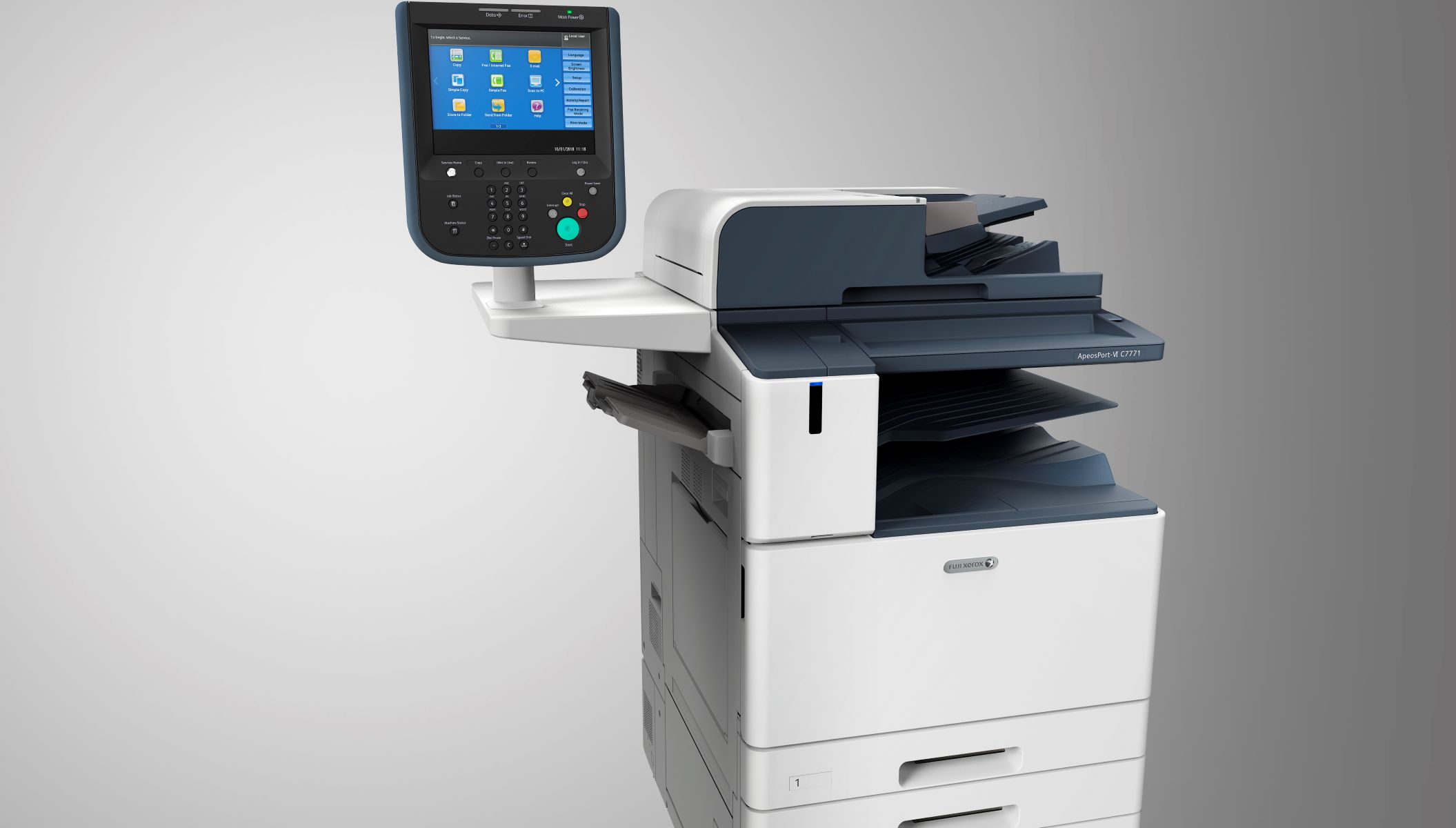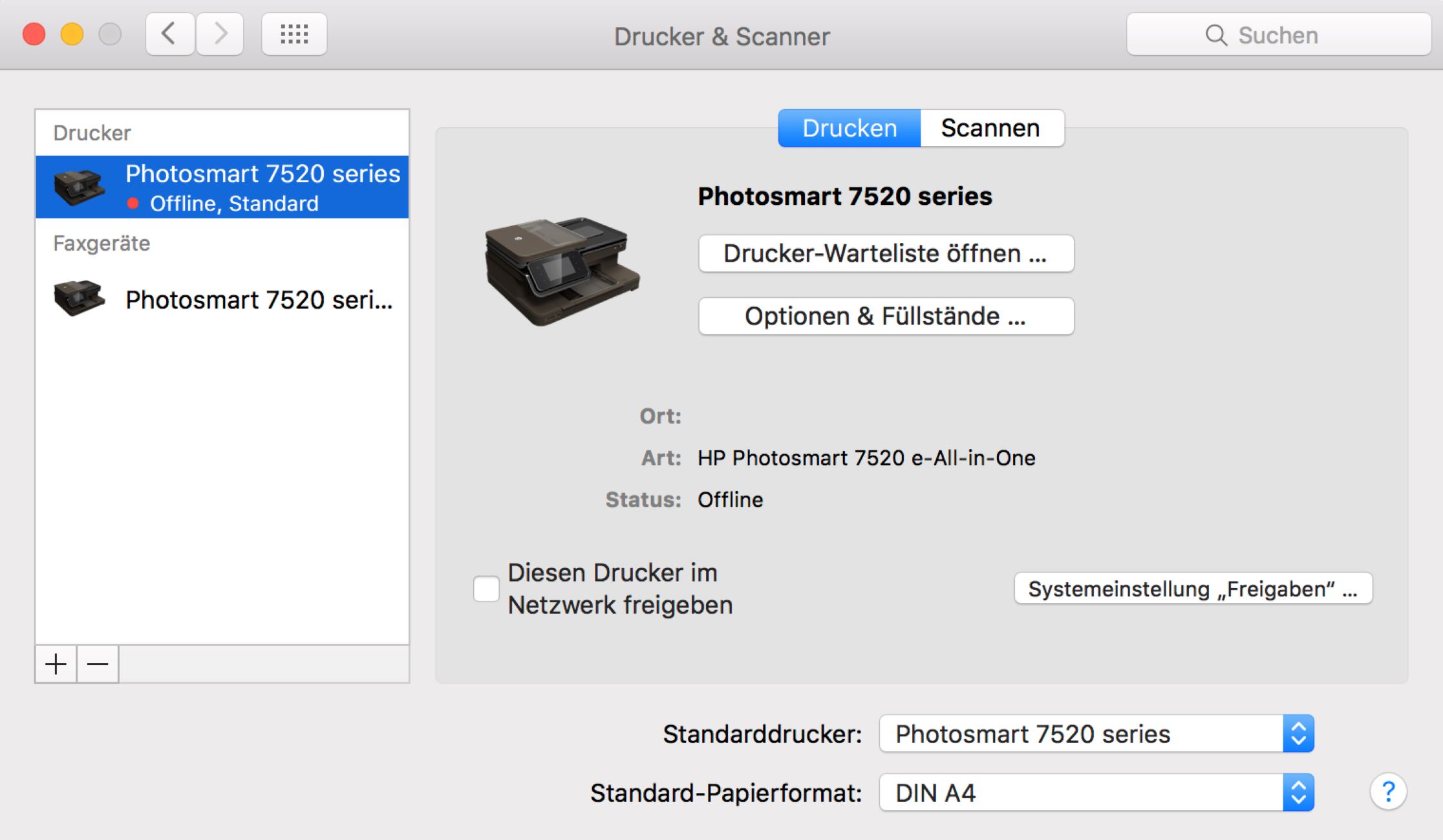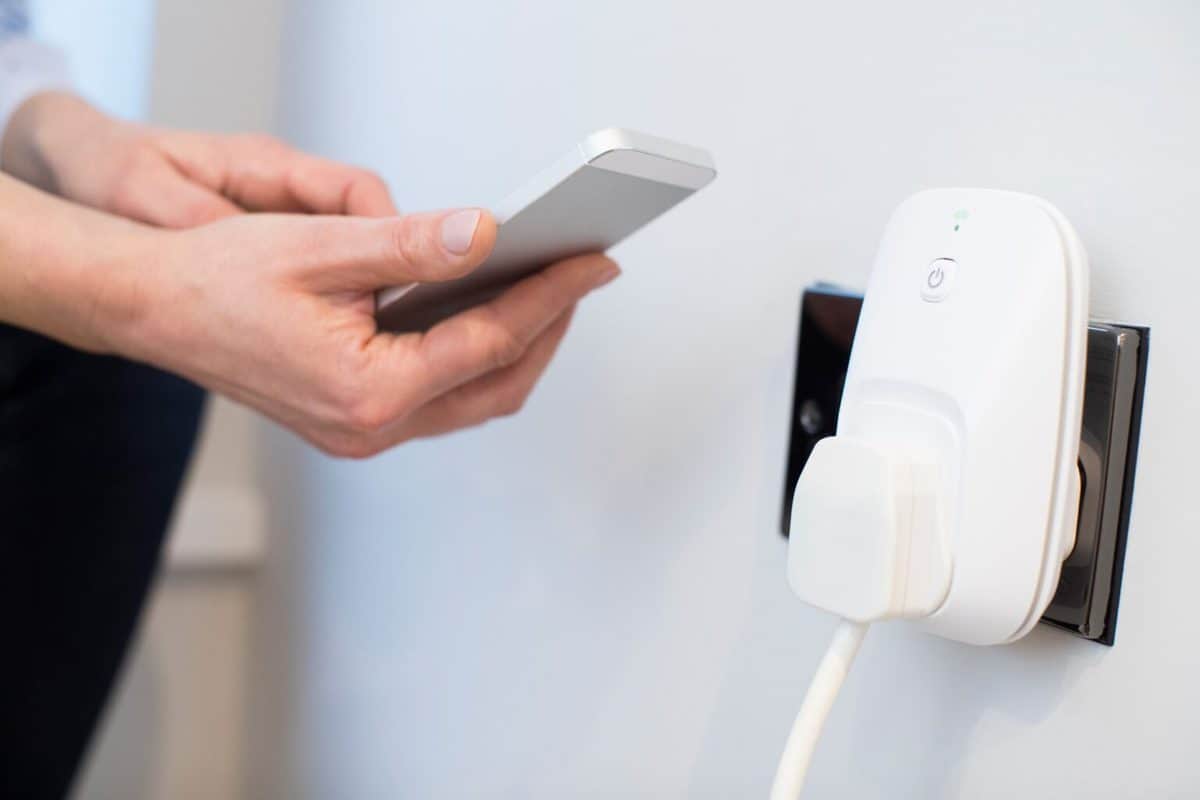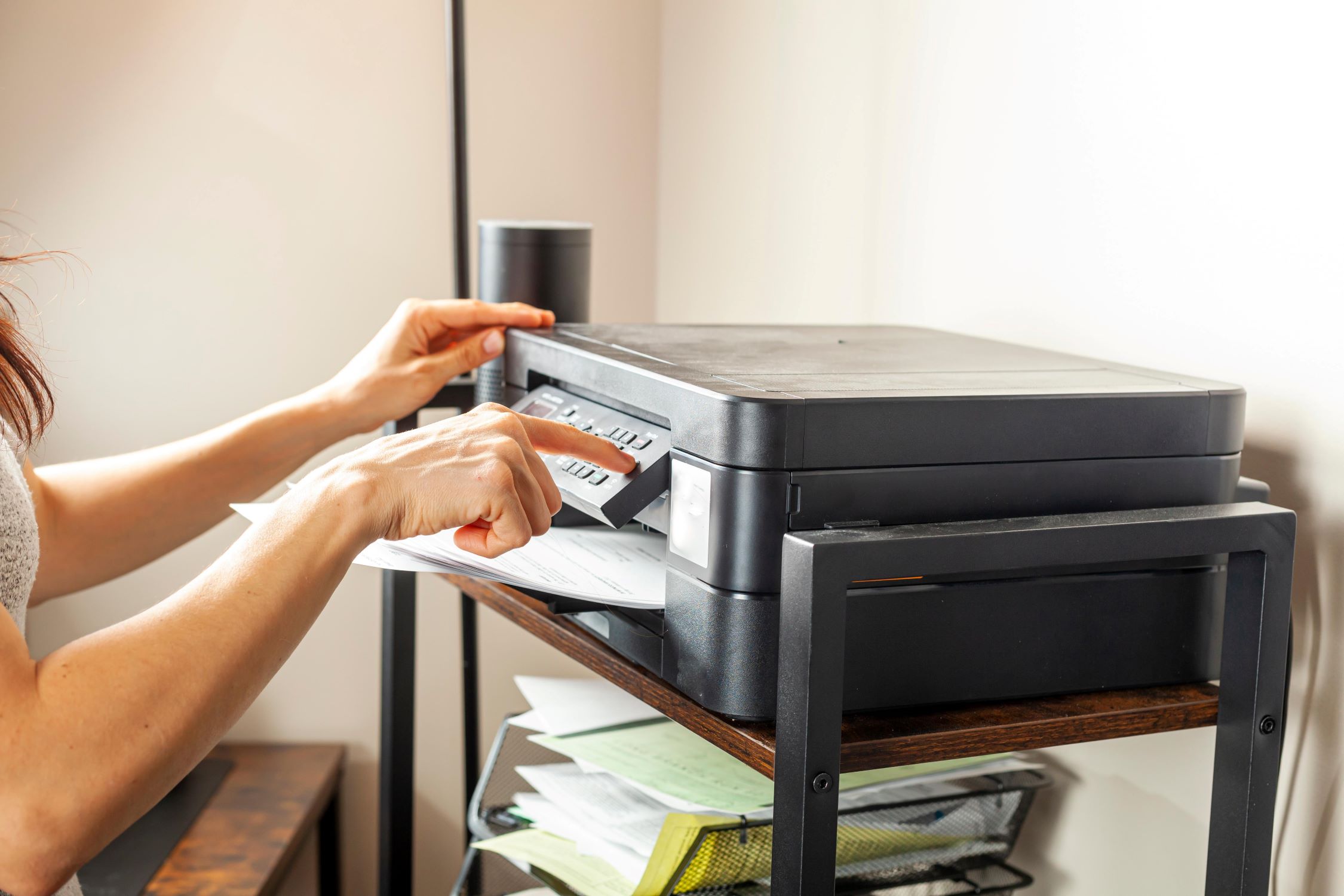

Articles
How To Store Cryptocurrency Offline
Modified: March 26, 2024
Learn the best ways to store your cryptocurrency offline in this comprehensive guide. Read articles and expert tips to ensure the security of your digital assets.
(Many of the links in this article redirect to a specific reviewed product. Your purchase of these products through affiliate links helps to generate commission for Storables.com, at no extra cost. Learn more)
Introduction
In today’s digital age, cryptocurrencies have become a popular form of investment and transaction. With the widespread use of cryptocurrencies, it’s crucial to understand the importance of keeping your digital assets safe and secure. Storing your cryptocurrency offline, also known as cold storage, is one of the most effective ways to protect your investments from hackers, malware, and other online threats.
When it comes to storing cryptocurrency offline, there are several methods to choose from. Each method has its own advantages and considerations, and selecting the right one depends on your specific needs and preferences. In this article, we will explore the various offline storage methods and provide you with a step-by-step guide to help you securely store your cryptocurrency offline.
Offline storage is important because it eliminates the risk of online attacks and vulnerabilities associated with keeping your cryptocurrency in an online wallet or exchange. By storing your cryptocurrency offline, you have full control over your private keys, which are essential for accessing and transferring your digital assets. This added layer of security ensures that you are the sole custodian of your funds, reducing the risk of theft and unauthorized access.
The offline storage methods discussed in this article offer different levels of security and convenience. It’s essential to understand the pros and cons of each method before making a decision. It’s worth noting that while offline storage significantly reduces the risk of cyber-attacks, it’s still important to take precautionary measures such as securing your physical storage devices and regularly updating your software to protect against potential threats.
In the following sections, we will delve into the specific offline storage methods available for safeguarding your cryptocurrency. Whether you’re a beginner or an experienced investor, this comprehensive guide will provide you with the knowledge and tools needed to effectively store your digital assets offline and enjoy peace of mind knowing that your investments are secure. Let’s explore the different offline storage options and determine the best approach for your cryptocurrency holdings.
Key Takeaways:
- Storing cryptocurrency offline, whether through paper wallets, hardware wallets, or offline computers, provides enhanced security, control over private keys, and protection against online threats, ensuring peace of mind for investors.
- When choosing an offline storage method for cryptocurrency, consider factors such as security, convenience, backup options, long-term storage capabilities, and technical expertise. Implement best practices and stay informed to safeguard digital assets effectively.
Read more: How To Store Ethereum Offline
Why Store Cryptocurrency Offline?
Storing cryptocurrency offline is essential for several reasons. Let’s explore why it’s crucial to keep your digital assets offline and away from online vulnerabilities.
1. Security: Storing cryptocurrency offline provides a higher level of security compared to online storage options. Online wallets and exchanges are susceptible to hacking attempts, malware infections, and phishing attacks. By keeping your cryptocurrency offline, you eliminate the risk of these threats, ensuring that your assets are safe and secure.
2. Protection against online attacks: Hackers are constantly searching for vulnerabilities in online systems to steal cryptocurrency. With offline storage, you remove the possibility of a hacker gaining access to your private keys and stealing your funds. This is especially important if you hold a significant amount of cryptocurrency.
3. Control over private keys: When you store cryptocurrency offline, you have complete control over your private keys. Private keys are essential for accessing and transferring your digital assets. By maintaining control over your private keys, you eliminate the risk of third-party involvement or reliance on external entities.
4. Reliability: Online wallets and exchanges can occasionally experience technical issues or even temporary shutdowns. By storing your cryptocurrency offline, you don’t have to worry about the availability or reliability of third-party platforms. Your assets are always accessible as long as you have your offline storage device or method at hand.
5. Protection against scams and fraud: Storing cryptocurrency offline protects you from falling victim to various scams and fraud schemes prevalent in the online world. Offline storage methods require you to physically access your assets, reducing the chance of unknowingly falling prey to fraudulent activities.
6. Long-term storage: Offline storage provides an excellent solution for long-term storage of your cryptocurrency. By keeping your assets offline, you can securely store them for an extended period without the risk of losing them due to system failures, data breaches, or other online threats.
In summary, storing cryptocurrency offline offers superior security, protection against online attacks, control over private keys, increased reliability, defense against scams and fraud, and a reliable long-term storage solution. By opting for offline storage, you can ensure the safety and security of your digital assets, giving you peace of mind and allowing you to take full control of your cryptocurrency holdings.
Different Offline Storage Methods
There are several offline storage methods available to securely store your cryptocurrency. Each method offers its own unique advantages and considerations. Let’s explore the different offline storage options.
- Paper Wallets: A paper wallet is a physical printout of your cryptocurrency’s public and private keys. It’s one of the simplest and most cost-effective offline storage methods. To create a paper wallet, you generate a pair of keys using a secure offline computer, print them on a piece of paper, and store it in a safe place. Paper wallets provide excellent security as they are not connected to the internet, making it nearly impossible for hackers to gain access. However, it’s important to protect the paper wallet from physical damage, loss, or theft.
- Hardware Wallets: Hardware wallets are physical devices specifically designed for offline storage of cryptocurrencies. These devices resemble USB drives and come with built-in security features to protect your private keys. Hardware wallets offer an excellent balance between security and convenience. They are resistant to malware and hacking attempts, ensuring the safety of your assets. Users can securely store their private keys on the hardware wallet and connect it to a computer or a mobile device when they need to access or execute transactions. Some popular hardware wallet brands include Ledger, Trezor, and KeepKey.
- Offline Computers: Another option for offline storage is to use an isolated computer that is never connected to the internet. This ensures that your cryptocurrency remains secure as it is stored offline and away from potential online threats. Offline computers require some technical expertise to set up and maintain. They are typically used by advanced users who prefer to have complete control over their offline storage process.
- Brain Wallets: Brain wallets are a unique offline storage method that involves memorizing the private key associated with your cryptocurrency. Instead of relying on a physical device or a paper printout, you create a private key using a passphrase or a series of words that are easy for you to remember. Brain wallets can be convenient as they eliminate the need for physical storage. However, they can pose a higher risk if the passphrase is forgotten or compromised.
- Cryptocurrency Vaults: Some cryptocurrency exchanges and financial institutions offer vault services for offline storage of digital assets. These vaults are highly secured facilities that physically store your cryptocurrency in a cold wallet. Cryptocurrency vaults provide an extra layer of security, as they are often located in highly secure facilities with strict access controls. However, it’s important to carefully research and select a trusted and reputable provider when using this storage method.
Choosing the right offline storage method depends on your security requirements, technical expertise, and convenience preferences. It’s important to thoroughly research and understand the pros and cons of each method before making a decision. By selecting an appropriate offline storage method, you can ensure the safety and security of your cryptocurrency investments.
Paper Wallets
Paper wallets are one of the simplest and most cost-effective methods of storing cryptocurrency offline. They involve generating a pair of keys (public and private) using a secure offline computer and then printing them on a physical piece of paper. Paper wallets provide an extra layer of security as they are not connected to the internet, making it nearly impossible for hackers to gain access to your private keys.
To create a paper wallet, users must follow these steps:
- Generate keys offline: Use a trusted offline computer to generate a random pair of keys – a public key for receiving funds and a private key for accessing and managing your cryptocurrency. Ensure that the offline computer is free from any malware or viruses to maintain the security of the generated keys.
- Print the keys: Print the generated keys on a physical piece of paper. It’s important to use a printer that is not connected to the internet to prevent any potential leaks or compromises. Consider using a printer that does not store print history to further enhance security.
- Secure the paper wallet: Once the keys are printed, it’s essential to store the paper wallet in a secure and tamper-proof location. Consider using a safe or lockbox, or even laminating the paper wallet to protect it from physical damage, moisture, and wear and tear.
- Backup the paper wallet: It’s highly recommended to create multiple copies of your paper wallet and store them in different secure locations. This ensures that even if one copy is lost or damaged, you can still retrieve your cryptocurrency using the backup copies.
Paper wallets offer excellent security as they are completely offline and not susceptible to online attacks. However, it’s important to keep in mind some potential considerations and risks associated with paper wallets.
One key consideration is the risk of physical damage or loss of the paper wallet. Fire, flood, theft, or misplacement can lead to the permanent loss of your cryptocurrency. It’s crucial to take appropriate measures to protect and securely store your paper wallet.
Another consideration is the potential vulnerability of the offline computer used to generate the keys. Ensure that the computer is free from any malware or viruses that may compromise the security of your keys. Use reputable and up-to-date antivirus software to regularly scan and protect your offline computer.
Furthermore, when it comes time to spend or transfer your cryptocurrency from a paper wallet, you will need to import or sweep the private keys into a digital wallet or an online exchange. This step involves exposing your private keys to potential online risks. It’s important to research reputable and secure methods for importing or sweeping your paper wallet to minimize the risk of theft or compromise.
In summary, paper wallets provide a simple and affordable offline storage solution for cryptocurrency. By generating and printing your keys on a physical piece of paper, you can securely store your digital assets away from online threats. However, it’s crucial to take precautions, such as securing and backing up your paper wallet and protecting the offline computer used to generate the keys. With proper care and attention, paper wallets can be an effective way to store cryptocurrency offline.
Hardware Wallets
Hardware wallets are physical devices specifically designed for offline storage of cryptocurrencies. They offer a convenient and secure way to store your digital assets while keeping your private keys offline and protected from potential online threats.
Here’s how hardware wallets work and how you can use them to store your cryptocurrency securely:
- Choose a reputable hardware wallet: There are several hardware wallet brands available, including Ledger, Trezor, and KeepKey. Research and select a reputable hardware wallet that meets your specific needs in terms of supported cryptocurrencies, ease of use, and security features.
- Set up the hardware wallet: When you purchase a hardware wallet, you will typically need to set it up by following the manufacturer’s instructions. This usually involves connecting the device to your computer or mobile phone and installing the necessary software or applications.
- Generate and secure your private keys: Once the hardware wallet is set up, it will generate a pair of private and public keys. The private keys will be securely stored within the hardware wallet and never exposed to the computer or any online connection.
- Access and manage your cryptocurrency: To access and manage your cryptocurrency, you will need to connect the hardware wallet to a computer or mobile device. This connection is usually made via a USB cable or Bluetooth. The hardware wallet acts as a secure bridge between your digital assets and the online world, ensuring that your private keys remain protected.
- Execute transactions securely: When you want to send or receive cryptocurrency, you can initiate the transaction through the software or application provided by the hardware wallet manufacturer. The transaction details are securely processed within the hardware wallet, and you will need to physically confirm the transaction on the device itself to authorize it. This added layer of security prevents unauthorized access to your private keys.
- Backup your hardware wallet: Most hardware wallets provide a recovery phrase or seed phrase during the initial setup process. This recovery phrase acts as a backup of your private keys. It’s crucial to write down and securely store this recovery phrase in a separate location from your hardware wallet. In case your hardware wallet is lost or damaged, you can use the recovery phrase to restore access to your cryptocurrency.
Hardware wallets offer an excellent balance of security and convenience. They are resistant to malware and hacking attempts, providing a safer storage solution compared to online wallets or exchanges. Their offline nature ensures that even if your computer or mobile device is compromised, your private keys remain secure within the hardware wallet.
However, it’s important to note that hardware wallets are not completely immune to risks. Physical damage or loss of the device can result in the loss of access to your cryptocurrency unless you have a backup of the recovery phrase. It’s crucial to secure and protect your hardware wallet and backup the recovery phrase in a separate, safe location.
In summary, hardware wallets are an excellent option for offline storage of cryptocurrency. With their secure chip technology and physical authentication steps, they provide a reliable and user-friendly solution for storing digital assets. By choosing a reputable hardware wallet, setting it up correctly, and safeguarding your recovery phrase, you can ensure the safety and security of your cryptocurrency investments.
Read more: How To Store Crypto Offline
Offline Computers
Offline computers provide a unique method of storing cryptocurrency offline by utilizing a computer that is never connected to the internet. This method offers a high level of security and control over your private keys, as your cryptocurrency assets are stored offline and inaccessible to online threats.
Here’s how you can use an offline computer for storing your cryptocurrency securely:
- Set up an offline computer: Start by obtaining a computer that will be dedicated solely to offline storage. This can be an older device that no longer requires internet access or a purpose-built offline computer.
- Install a wallet software: Choose a reputable wallet software that supports the cryptocurrencies you want to store offline. Download and install the wallet software on your offline computer.
- Generate private and public keys: Within the wallet software on your offline computer, generate a pair of private and public keys. This process is similar to generating keys on other types of wallets.
- Store your private keys: After generating the private keys, ensure that you securely store them. This can include saving them on an encrypted USB drive, printing them as a paper wallet, or using another secure method that meets your preferences.
- Receive funds: To receive cryptocurrency, provide your public address to the sender or copy it to a device that is connected to the internet. The offline computer will never be connected to the internet, preventing any risk of unauthorized access.
- Monitor your funds: While the offline computer is not connected to the internet, you can still monitor your cryptocurrency balances by securely importing your public address to an online explorer or another device connected to the internet.
- Transfer funds: When you need to send or transfer your cryptocurrency, sign the transaction on the offline computer using the wallet software. Then, transfer the signed transaction to a device connected to the internet to broadcast it to the network.
Offline computers offer excellent security as they eliminate the risk of online attacks and potential exposure to malware and viruses. However, it’s important to consider the following factors when using an offline computer for cryptocurrency storage:
First, ensure that your offline computer remains offline and never connects to the internet. Any connection to the internet can expose your private keys to potential risks. It’s crucial to dedicate the computer solely to offline storage and take precautions to prevent accidental internet access.
Second, keep your offline computer physically secure. Protect it from theft, damage, or tampering to maintain the security of your private keys and cryptocurrency assets.
Lastly, regularly update the wallet software and any other security software installed on the offline computer to ensure protection against potential vulnerabilities. Keep an eye on any security updates or patches that may improve the security of your offline storage setup.
In summary, offline computers offer a robust method of storing cryptocurrency offline. By dedicating a computer solely to offline storage, you can maintain control over your private keys and protect your digital assets from online threats. However, it’s important to ensure the ongoing security and physical protection of the offline computer to safeguard your cryptocurrency investments effectively.
Use a hardware wallet to store your cryptocurrency offline. This physical device stores your private keys offline, making it more secure than online storage options.
Brain Wallets
Brain wallets provide a unique offline storage method for cryptocurrency by relying on the memorization of a passphrase or a sequence of words to derive a private key. This method eliminates the need for physical storage devices and offers convenience and portability. However, it is important to understand the benefits and potential risks associated with brain wallets.
Here’s how you can utilize a brain wallet for secure offline cryptocurrency storage:
- Create a strong passphrase: Choose a unique and complex passphrase that is easy for you to remember but difficult for others to guess. Avoid using common phrases, personal information, or easily identifiable patterns.
- Derive a private key: Use a trusted brain wallet generator or software that will derive a private key from your chosen passphrase. The private key is generated based on a predetermined algorithm, which is reproducible as long as you input the same passphrase.
- Store the passphrase securely: Memorize the passphrase and practice it regularly to ensure you do not forget it. It is crucial to keep the passphrase confidential and avoid sharing it with anyone.
- Generate and backup the public address: Use the derived private key to generate the associated public address for your cryptocurrency. Make a backup of this public address as a reference for future transactions.
- Use caution: When using a brain wallet, it is important to be cautious and aware of potential risks. Brain wallets are vulnerable to dictionary attacks or brute-force attempts if the chosen passphrase is not strong enough. It is essential to use a long and complex passphrase that cannot be easily guessed or cracked.
- Regularly update your passphrase: To maintain security, consider updating your passphrase periodically. This reduces the risk of someone guessing or hacking your passphrase through social engineering or other means.
Brain wallets offer convenience and portability by eliminating the need for physical storage devices. They provide an alternative offline storage solution for those who prefer not to rely on hardware or paper wallets. However, there are important considerations and risks associated with brain wallets.
One significant risk is the potential vulnerability of the chosen passphrase. If your passphrase is weak or easily guessable, it can be vulnerable to dictionary attacks or brute force attempts by hackers. It is crucial to choose a strong passphrase and regularly update it to minimize the risk of compromise.
Another risk is the possibility of forgetting or losing the passphrase. Unlike physical storage devices or paper wallets, which can be replaced or recovered using backups, losing a brain wallet passphrase can result in permanent loss of access to your cryptocurrency. It is essential to memorize and securely store the passphrase to prevent loss or forgetfulness.
In summary, brain wallets offer a unique and convenient method of offline cryptocurrency storage by relying on the memorization of a passphrase. While they can be a viable option, it is crucial to select a strong and complex passphrase and securely store it to minimize the risk of hacking or loss. Although brain wallets offer convenience, it is important to weigh their risks and consider backup solutions in case of unexpected memory lapses or forgetting the passphrase.
Cryptocurrency Vaults
Cryptocurrency vaults provide an offline storage solution through specialized services offered by cryptocurrency exchanges or financial institutions. These vaults offer a highly secure environment for storing your digital assets, ensuring protection against theft, hacking, and other potential risks associated with online wallets or exchanges.
Here’s how cryptocurrency vaults work and how you can benefit from using them for offline storage:
- Select a reputable vault provider: Research and choose a trusted cryptocurrency exchange or financial institution that offers vault services. Ensure the provider has a strong track record of security and reliability.
- Create an account: Register an account with the vault provider and complete any necessary verification or authentication requirements.
- Transfer your cryptocurrency: Once your account is set up, transfer your cryptocurrency holdings to the vault provider’s designated cold wallet address. Cold wallets are offline storage devices or systems used by the provider to securely store digital assets.
- Security and access controls: Cryptocurrency vaults offer heightened security measures, including physical security, advanced encryption, multi-factor authentication, and restricted access controls. Some providers might combine these security features with cutting-edge technologies like biometric authentication or geolocation restrictions for added protection.
- Transaction execution: Cryptocurrency vaults typically require multiple levels of verification and approval before executing any transactions involving your stored assets. This extra layer of security ensures that only authorized individuals can access or transfer your cryptocurrency.
- Withdrawal process: If you wish to withdraw or transfer your cryptocurrency from the vault, the provider will facilitate the withdrawal process. This may involve additional verification steps and waiting periods to ensure the security of your funds.
Cryptocurrency vaults offer several advantages for offline storage, including:
Enhanced security: Cryptocurrency vaults provide a highly secure environment for storing your digital assets. The combination of physical security, advanced encryption, and access controls significantly reduces the risk of theft or unauthorized access.
Reliable backup: By using a reputable vault provider, you benefit from their backup and recovery processes. In the event of a disaster or failure, the provider will have contingency measures in place to ensure the safety and accessibility of your stored cryptocurrency.
Convenience: Cryptocurrency vaults offer convenience by eliminating the need for users to manage their offline storage devices or worry about physical security measures. The vault provider handles the operational aspects, allowing you to focus on your investments.
However, it’s important to consider certain aspects when using cryptocurrency vaults. You must carefully research and select a reputable provider with a proven track record in security and customer service. Additionally, make sure to understand the fees associated with vault services, including any deposit or withdrawal charges.
In summary, cryptocurrency vaults provide a secure and convenient method for offline storage of your digital assets. By choosing a reputable vault provider, you can benefit from enhanced security measures and peace of mind knowing that your cryptocurrency is protected from online threats. However, it’s crucial to carefully evaluate and choose a trusted provider to ensure the safety and accessibility of your stored assets.
Choosing the Right Offline Storage Method
When it comes to offline storage of your cryptocurrency, choosing the right method is crucial to ensure the security, accessibility, and convenience of your digital assets. Each offline storage method discussed in this article has its own benefits and considerations. Here are some factors to consider when selecting the right offline storage method for your cryptocurrency holdings:
- Security: Evaluate the security features of each offline storage method. Consider the level of protection offered against online threats, hacking attempts, and physical damage or theft. Hardware wallets and cryptocurrency vaults, for example, provide advanced security measures, while paper wallets and brain wallets need careful consideration and handling to maintain security.
- Convenience: Assess the convenience and ease of use of each offline storage method. Some methods, like hardware wallets and cryptocurrency vaults, offer user-friendly interfaces and straightforward processes for accessing and managing your digital assets. Others may require more technical expertise or additional steps, such as setting up an offline computer or memorizing a passphrase for brain wallets.
- Backup and recovery: Consider the backup options available for each offline storage method. Having a reliable backup is crucial to prevent the permanent loss of your cryptocurrency due to physical damage, loss, or human error. Paper wallets and hardware wallets often provide backup options like recovery phrases or seed words, while cryptocurrency vaults and offline computers might have their own backup and recovery processes.
- Long-term storage: If you are planning to store your cryptocurrency for an extended period, consider the longevity and durability of each offline storage method. Paper wallets, for example, may deteriorate over time, while hardware wallets and offline computers generally offer better long-term storage solutions.
- Technical expertise: Assess your own technical skills and comfort level with each offline storage method. Some methods, like paper wallets or hardware wallets, may require basic knowledge of generating keys and managing wallets. Offline computers and brain wallets might involve more advanced technical know-how. Choose a method that aligns with your level of expertise to ensure a smooth and secure offline storage experience.
Remember that there is no one-size-fits-all solution when it comes to offline storage. The right method for you will depend on your specific needs, preferences, and risk tolerance. It may be beneficial to combine different offline storage methods to diversify the security of your holdings and provide redundant backup options.
Regardless of the offline storage method you choose, it’s important to implement best practices for security and regularly update your software and devices to protect against potential threats. Additionally, always double-check the legitimacy and security of any software, hardware, or service provider before entrusting them with your cryptocurrency.
By carefully evaluating the security features, convenience, backup options, long-term storage capabilities, and your technical expertise, you can select the right offline storage method that meets your specific requirements. By taking proactive measures to protect and securely store your cryptocurrency offline, you can enjoy peace of mind and confidently manage your digital assets.
Read more: How To Store Bitcoin Offline
Step-by-Step Guide to Offline Storage
Here is a step-by-step guide to help you securely store your cryptocurrency offline:
- Assess your offline storage options: Review the different offline storage methods discussed in this article and choose the one that best suits your needs and preferences.
- Set up your offline storage method: Depending on the method you have chosen, follow the specific setup instructions. This may involve installing software, setting up hardware devices, or configuring an offline computer.
- Generate your private and public keys: Using the chosen offline storage method, generate a pair of private and public keys. This step may involve using a secure offline computer or following the instructions provided by the hardware wallet or vault provider.
- Securely store your private keys: After generating the private keys, ensure you store them securely. If you choose a paper wallet, print it and store it in a safe and tamper-proof location. If you opt for a hardware wallet, follow the backup instructions provided by the manufacturer.
- Backup your keys: It is important to create backups of your private keys in case of loss, damage, or forgetfulness. This can include making extra copies of paper wallets, creating digital backups encrypted with strong passwords, or following the backup procedures provided by hardware wallets or vault providers.
- Transfer your cryptocurrency to the offline storage: If you are using a hardware wallet or vault, follow the instructions provided by the manufacturer or provider to transfer your cryptocurrency from your exchange or online wallet to the offline storage. If you are using a paper wallet, you can generate a public address or QR code to receive funds.
- Ensure physical security: Take physical security measures to protect your offline storage. Consider using a safe or a secure location to store paper wallets or hardware devices. Keep them away from potential hazards such as fire, water, or extreme temperatures.
- Regularly update your offline storage: Stay updated with the latest software updates and security patches for your offline storage method. This applies to both software wallets on offline computers and firmware updates for hardware wallets.
- Test accessibility: Periodically test the accessibility of your offline storage. Verify that you can access your cryptocurrency holdings using your private keys or hardware wallet. This ensures that you maintain control and can retrieve your funds when needed.
- Be cautious during transactions: When you need to perform transactions with your offline storage, such as sending or receiving cryptocurrency, follow the specific steps provided by the offline storage method. Be mindful of the instructions and verify transaction details before confirming.
By following these step-by-step instructions, you can confidently and securely store your cryptocurrency offline. Remember to regularly review and update your offline storage security practices, backup your keys, and stay informed about the latest developments in the cryptocurrency space to make informed decisions for the safety of your digital assets.
Conclusion
Storing your cryptocurrency offline is an essential step in protecting your digital assets from online threats. By utilizing one of the various offline storage methods discussed in this article, you can enhance the security, accessibility, and peace of mind associated with your cryptocurrency investments. Whether you choose a paper wallet, hardware wallet, offline computer, brain wallet, or cryptocurrency vault, each option provides its own unique benefits and considerations.
Paper wallets offer a cost-effective and straightforward solution, while hardware wallets provide a balance of security and convenience. Offline computers offer complete control over your private keys, and brain wallets offer the convenience of memorizing a passphrase. Cryptocurrency vaults provide advanced security measures and reliable backup services.
When selecting the right offline storage method, it’s important to consider factors such as security, convenience, backup options, long-term storage capabilities, and your own technical expertise. By carefully evaluating these factors, you can choose the method that best aligns with your specific needs and preferences.
To ensure secure offline storage, it is essential to follow best practices, such as securely storing private keys, creating backups, and maintaining physical and digital security measures. Regularly updating your offline storage devices, software, and firmware will help protect against potential vulnerabilities.
Remember that offline storage is not foolproof, and it is important to stay vigilant and informed about the latest developments in cryptocurrency security. Stay updated on potential threats and implement appropriate security measures to safeguard your digital assets effectively.
By taking the necessary steps to securely store your cryptocurrency offline, you can have peace of mind knowing that your digital assets are protected from online threats. Safeguarding your investments will allow you to confidently navigate the world of cryptocurrencies, knowing that you have taken the necessary steps to ensure the integrity and security of your holdings.
Frequently Asked Questions about How To Store Cryptocurrency Offline
Was this page helpful?
At Storables.com, we guarantee accurate and reliable information. Our content, validated by Expert Board Contributors, is crafted following stringent Editorial Policies. We're committed to providing you with well-researched, expert-backed insights for all your informational needs.














0 thoughts on “How To Store Cryptocurrency Offline”